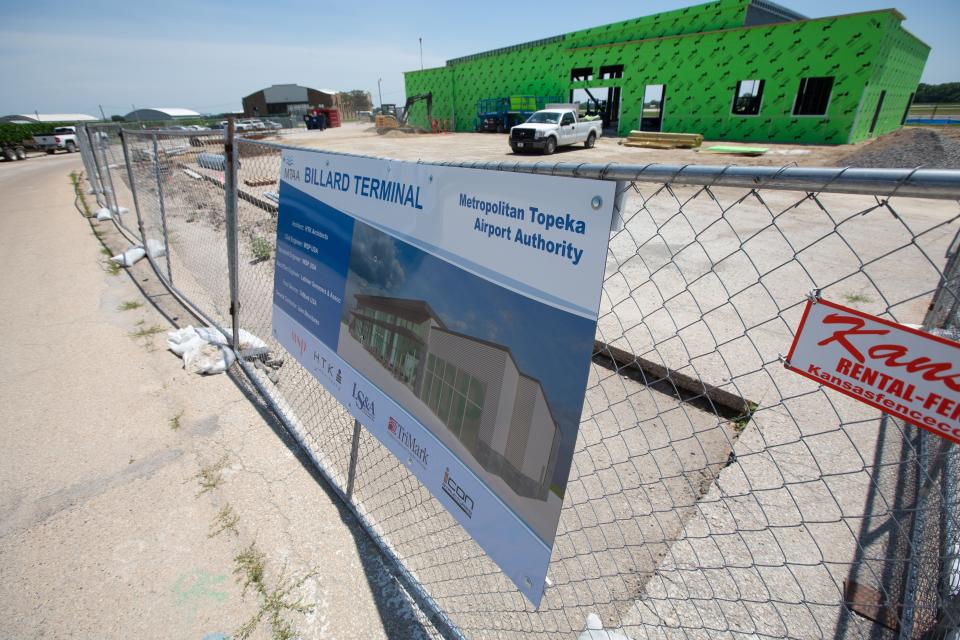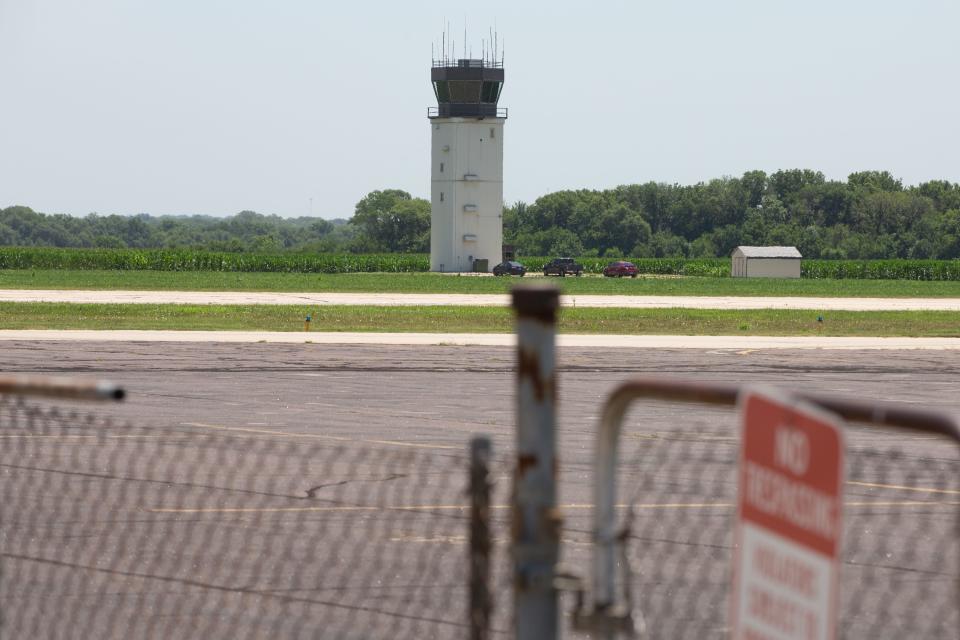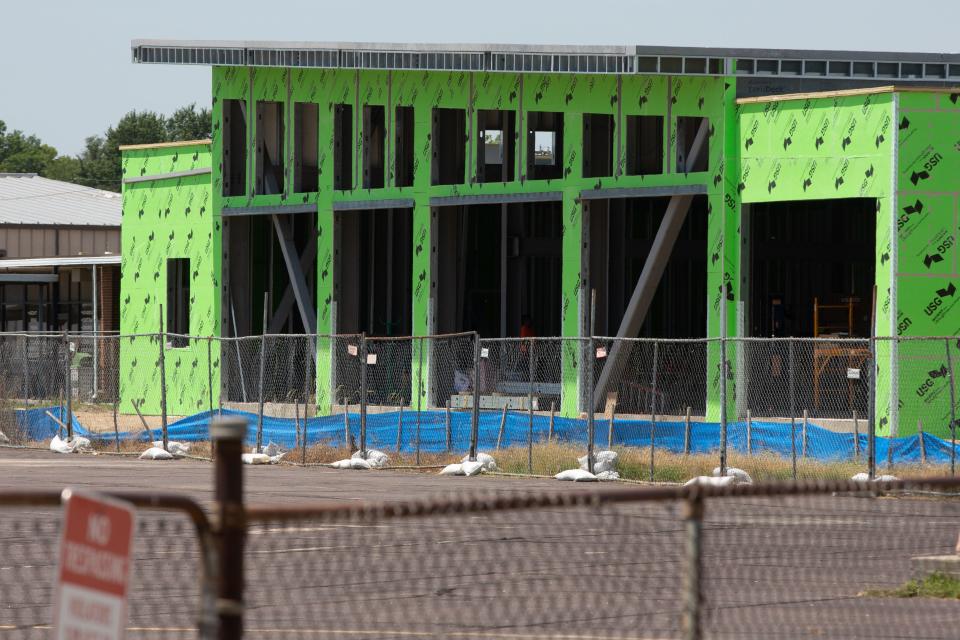Topeka airport needs new air traffic control tower. Here's how federal funding will help
Philip Billard Municipal Airport in northeast Topeka is in line to share in a $500 million pot of money set aside from the federal infrastructure funding to build new air traffic control towers.
Documents from the Federal Aviation Administration, which owns the tower at Billard, show the airport has one of the 31 outdated small airport towers set to be replaced.
"This is a project that the FAA has awarded to themselves basically," said Eric Johnson, the director of airports at the Metropolitan Topeka Airport Authority. "We're certainly going to benefit from that because it'll be a new facility and the controllers that work there will have a great place to work.

"But we did not apply for it. We did not receive a grant for it. It's just a new control tower to replace an existing FAA-owned control tower."
Topeka Billard airport needs new air traffic control tower
The FAA has said the money is going to towers that are operating "beyond their intended design life." Billard's tower was commissioned in 1977.
"That's an old power and not in the greatest of condition," Johnson said.
The FAA contracts with Midwest Air Traffic Control Services to operate the tower. Johnson said the controllers are "top notch," and while he expects no changes to safety or ease of use, the working conditions will improve.

New tower in Topeka will be eco-friendly
The new air traffic control tower will have a more environmentally sustainable design for municipal and smaller airports. Aviation officials say the sustainability elements include the following:
All-electric building systems.
Materials and products free from chemicals known to pose health risks.
Thermally efficient facade.
High-recycled steel and metal products.
Renewable mass timber when usable.
Ground-source heating and cooling in some environments.
"These new air traffic control towers will mean that smaller airports can handle more flights, more sustainably and more affordably," U.S. transportation secretary Pete Buttigieg said in April. "I look forward to seeing this design go from the drawing board to construction sites across the country, helping our nation’s airports support more travelers, grow their local economies and prepare for the future of low-carbon aviation."
Groundbreaking expected in 2024
FAA officials said the first groundbreaking could be in 2024.
The project is currently going through a regulatory process where people can submit public comment on the environmental assessment. Docket FAA-2023-1368 is available online.
Johnson said Billard is going through a the FAA-required siting process to determine the tower's best location. It will most likely go near the current tower because it has the best vantage point to see the runways.
Federal infrastructure funding pays for airport improvements
The federal funding for the air traffic control tower comes as both Billard and Topeka Regional airports are being upgraded thanks to other federal funding streams.
The FAA previously awarded $3.8 million to Billard to replace its aging general aviation terminal building. The new facility will increase passenger capacity and ensure disability accessibility compliance.
The agency also awarded $1.9 million to Topeka Regional for a new passenger loading bridge, which will also increase capacity while ensuring disability access. The old bridge had outlived its useful life and was causing distresses with the terminal connection.

The two Topeka airports were also getting a combined $1.3 million through other funds from the infrastructure law.
Johnson said the federal funding is extremely important to improving the airports.
"At Billard, the terminal building there is vintage 1954, and we're experiencing constant failures with systems or with the building itself," he said. "If you take a drive by that old building some time, you'll see the brick is falling apart, sidewalks are heaved, interior we have concrete floors over top of the drains, the drains are collapsing so we're cutting out floors to make repairs. It's just an old building."
The new $4.7 million Billard Airport terminal building is under construction with anticipated completion by June 2024.
More: Infrastructure law has sent $1.5 billion to Kansas so far. Here's how it will be spent.
Will passenger flights return to Topeka?
Johnson said if passenger air travel were to ever return to Topeka, it would be through Topeka Regional, not Billard.
"It's a general aviation facility," he said of Billard, "which includes everything from the smallest aircraft you can think of, privately owned, up through a small business jet would use that airport simply for a fuel stop or for meetings in Topeka because it's convenient to the city of Topeka. Also, it's where private owners will keep their aircraft in T-Hangars that they lease from us."
"We are always trying to bring air service back to Topeka," Johnson said. "That means whether it's daily service, which is pretty tough market right now given the pilot shortage, but we're also looking at less than daily, which means like a destination type air service that goes to a vacation destination."
Topeka Mayor Mike Padilla said last month that Topeka Regional is positioned well to benefit from any air travel and shipping needs of the Panasonic electric vehicle battery plant that is under construction in De Soto. But he would also like to see passenger flights out of Topeka.
He said one company has already expressed interest.
"They were proposing airline service in Topeka again," Padilla said. "This time they were looking at a different market, looking at how the pandemic had affected the air industry, how they're flying fewer planes, smaller planes, the marketplaces for smaller planes. Topeka is perfectly situated for an operation where they could have as many as four flights a day to different locations out of Topeka in smaller planes.
"If we could get that running, I would rather drive 15 minutes to get from my house to the airport in Topeka, or hopefully people from Lawrence 20 minutes to Topeka rather than an hour or so to Kansas City and paying for the parking."
This article originally appeared on Topeka Capital-Journal: Topeka airport will get new air traffic control tower with FAA funds

